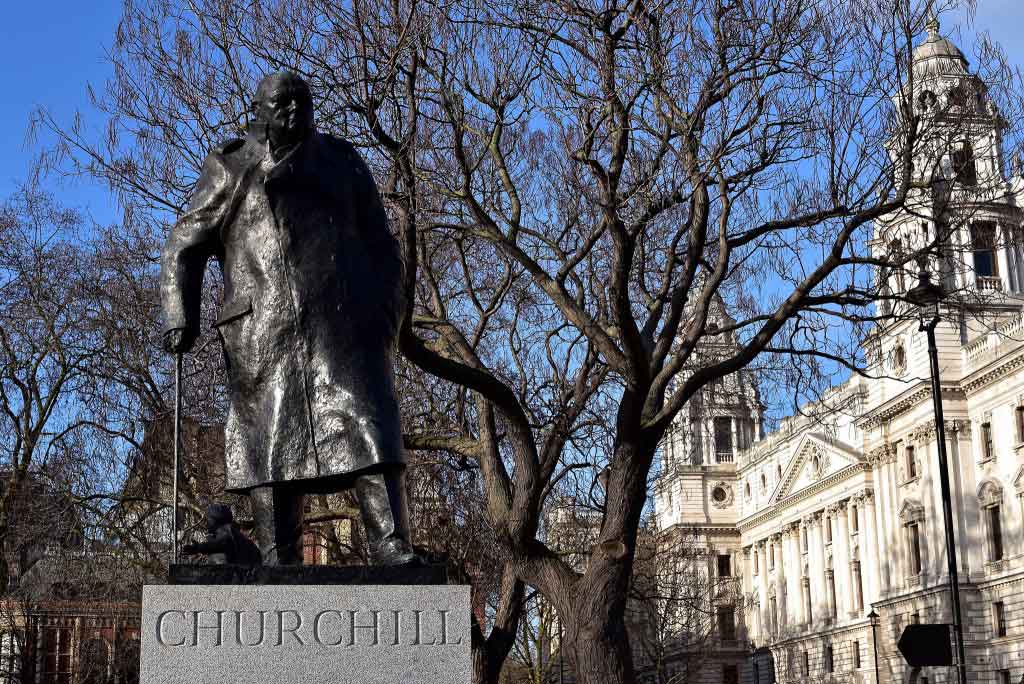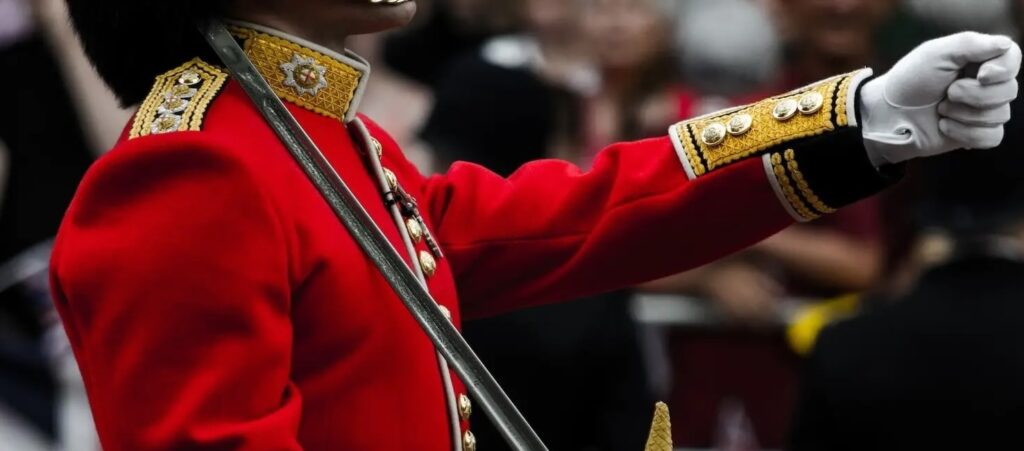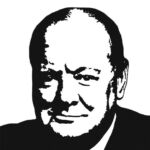
Churchill in the News
Press Release: Churchill’s Personal Items on Display at Chartwell

Winston Churchill, Parliament Square, London © Sue Lowry & Magellan PR
January 1, 1970
NATIONAL TRUST PRESS RELEASE
Date: Monday 30 January 2012
Personal items of Winston Churchill and his family go on public display for the first time in the UK
The passport used by Sir Winston Churchill when he was Prime Minister and a dictation machine for preparing his speeches are among over 40 personal items that have gone on public display for the first time in the UK.

2024 International Churchill Conference
Visitors to the National Trust’s Chartwell in Kent, his former home, can see objects that belonged to Sir Winston and his family and which help tell the story of his extraordinary life and times.
The items on display include:
- His tiny silver paint box [1]
- Diamond encrusted sword – a gift of King Abdul Aziz of Saudi Arabia [2]
- Painting by Sir John Lavery of Winston and Clementine’s son Randolph
- His miniature leather travelling globe
- Hairbrushes from beside his bed made from the wood of HMS Exeter complete with traces of his hair
- A toddler’s coat believed to have been worked on by the 1st Duchess of Marlborough, Sarah Churchill, (Sir Winston’s 6th great grandmother) for her first child [3]
- A Union Jack car rug [4]
- Ivory miniatures of the 7th Duke (Winston’s grandfather) and the 1st Duchess of Marlborough
- Dog bowl belonging to his beloved pet poodle Rufus [5]
When Lady Churchill handed Chartwell over to the National Trust in 1965, many hundreds of personal family items were put into store.
Now a fully-refurbished exhibition space and new museum-quality cases offer the necessary conditions for the display of many more items from the stores.
The space will also play host to changing displays every winter allowing visitors to see even more of the reserve collection and continued loans from the Churchill family.
Alice Martin, House & Collections Manager at Chartwell, said: “We are thrilled to be able to offer visitors this unique opportunity to see close-up such personal items that have never been on public display in this country.
“My particular favourite is Sir Winston’s passport. I welled up when I first handled it. It’s such an evocative object. We all have a passport but they don’t list our birthplace as Blenheim Palace and occupation as Prime Minister!”
The main exhibition runs until 1 November 2012.
From Wednesday 1 February, the studio which is home to the largest single collection of Churchill’s paintings will also be open for the new 2012 season.
Chartwell is in Westerham, Kent. For further information and opening times visit www.nationaltrust.org.uk/
– ends –
For further press information please contact:
Michelle Cleverley, Regional Marketing and Communications Officer: 07917 070491 or michelle.cleverley@
or Alison Dalby, Senior Press Officer, on 07824 418351 or alison.dalby@nationaltrust.
For images for media use visit the National Trust FTP site:
https://ftp.nationaltrust.org.
Login ID: PressOffice
Password: NTpressuse
Click on the ‘Chartwell exhibition’ folder to access and download hi-res images
Notes to editors
More about the display
[1] Tiny silver paint box
“Painting is complete as a distraction. I know of nothing which, without exhausting the body, more entirely absorbs the mind.” Winston Churchill
It is the summer of 1915 and Winston Churchill is wandering in the garden of Hoe Farm in Surrey, a house he and his wife Clementine are renting as a holiday retreat. Winston is sunk in a deep depression, brooding on the disastrous Dardanelles campaign earlier in the year, which he had been heavily involved in planning and where many thousands had lost their lives. He comes across Goonie, his sister-in-law, painting. Seeing that he was intrigued, Goonie hands him a box of watercolours and tells him to try for himself.
This was the start of what became an absorbing occupation for Churchill, where painting helped him confront storms, ride out depressions and rise above rough passages in his political life.
“When I get to heaven I mean to spend a considerable portion of my first million years in painting, and so get to the bottom of the subject.” Winston Churchill
Winston Churchill began to paint when he was 40 and it became a passion for the rest of his life. In painting, he found a refuge from the stresses and strains of everyday life, where he could escape into a world of colour, light and shade, proportion and perspective. Churchill painted until he was 85 years old and over his lifetime, produced around 535 pictures, 125 of which you can see at Chartwell. Chartwell and its grounds were a great inspiration to Churchill and he painted around 23 scenes there.
[2] Diamond encrusted Saudi Sword
This was presented to Mrs Churchill by the Sons of King Aziz at 10 Downing Street whilst Sir Winston was away.
[3] Lace Toddler’s Coat
The team at Chartwell are fundraising for a permanent mount for one item now on display – a toddler’s coat believed to have been worked on by the first Duchess of Marlborough, Sarah Churchill, for her first child. Always believed to have been a ‘tall tale’ the piece was recently looked at by a textile conservator when preparing it for display and her experience of working on the royal palaces collection of lace suggests that this is an extremely high quality example of lace which matches royal examples and is from the correct historic period. This being the case and the fact that the first Duchess of Marlborough was the most powerful woman in England besides the Queen lends a lot more credence to the story. The team hopes to raise funds to have it conserved and mounted as well as fully investigated by a lace expert.
[4] Union Jack car rug
Grace Hamblin, Winston Churchill’s personal secretary, recalled: “All the papers would go flying and the car rug on the floor; the dog would be pushed aside, the secretary pushed aside, everything pushed aside, ready to leap out. And he’d sayAh Chartwell’
[5] Dog Bowl
Sir Winston’s dog of choice was not the bull dog as many people believe but brown poodles – the first of which, Rufus, accompanied him throughout the Second World War. Rufus died in 1947 and is buried in Chartwell at the pet cemetery. He was succeeded by Rufus II, who died in 1963 and is also buried in the pet cemetery alongside the Churchills’ cats.
About Chartwell
Winston Churchill bought Chartwell in 1922 after falling in love with its views over the Weald of Kent. A practical man he built walls, helped excavate the lakes and personally chose plants and animals for the estate.
Chartwell today is presented as it was in its early heyday of the 1920s and 30s. Clementine Churchill created a lovely home even though she never really liked Chartwell. She feared that the house would prove too costly to run and was also disappointed that Winston had, quite out of character, bought it without consulting her.
Her fears proved correct and the house was put on the market twice before being bought by a consortium of Churchill’s friends and admirers in 1946 who wanted to save it for the nation. The consortium gave Chartwell to the National Trust in 1965, but the Churchills were to have the right to remain until their deaths when it would then be opened to the public.
Lady Churchill left Chartwell that same year, 1965, handing it over to the National Trust, but she played a big part in deciding on how it was to be displayed to the public. She wanted it to be presented as the family home she remembered in the 1920s with a few alterations, including a special exhibition space.
Since opening to the public in 1965, Chartwell has remained a popular destination for those that remember and admire him and it now welcomes close to 200,000 visitors a year.
About the National Trust
The National Trust is a charity with a love for preserving historic places and spaces across England, Wales and Northern Ireland. We’re a conservation charity that protects over 350 historic houses, 160 gardens, 1,100 kilometres of coastline, 254,000 hectares of land of outstanding natural beauty, 6 World Heritage Sites, 28 castles and 60 pubs – and opens them for people like you to enjoy. We have over 4 million members and over 61,000 volunteers. Find out more at:www.nationaltrust.org.uk
Subscribe
WANT MORE?
Get the Churchill Bulletin delivered to your inbox once a month.


